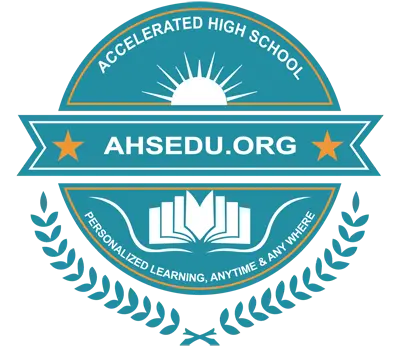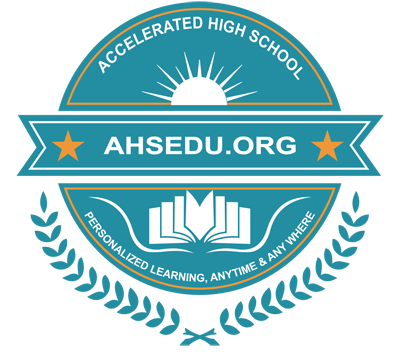Accelerated High School
Standardized Curriculum of Social Studies-II
In our world today, many amazing things are happening because of science and technology. It's important for everyone to learn about them, even kids in Grade 2. When we understand how things work and how to solve problems using evidence, we can think better about the world around us. Then we can help make decisions about important things like how to take care of the Earth, how to stay healthy, and how to fix problems in our communities.
Mission:
Students learn fundamental concepts about government, citizenship, geography, economics, and history. The focus of instruction is on developing an understanding of core democratic values, the rights and responsibilities of American citizens, and how key people and events contributed to the development of the American heritage. Exploration of cultural universals enables students to realize how the availability of resources, the changing environment, and innovation impact everyday life.
All students will acquire the knowledge and skills to think analytically about how past and present interactions of people, cultures, and the environment shape the American heritage. Such knowledge and skills enable students to make informed decisions that reflect fundamental rights and core democratic values as productive citizens in local, national, and global communities.
Vision:
This course is designed to spark curiosity and foster a deeper understanding of the world we live in. Through engaging lessons and activities, students will;
- Delve into both the past and present, comparing and contrasting key elements such as communication, transportation, work, and recreation.
- Gain a deeper appreciation for the dynamic forces shaping our planet.
- Embark on a comprehensive study of communities, ranging from bustling cities to serene rural areas, fostering an understanding of the distinct characteristics and lifestyles found within urban and suburban settings.
- Learn to differentiate between needs and wants, grasp the concepts of goods and services, and recognize the importance of prudent financial management, including saving money for future needs.
- Learn about rules and laws governing various spheres of life, from the household to the broader community, while also gaining insight into the roles of government and leadership.
- Encounter captivating figures and events that have shaped our world, from iconic landmarks like the Lincoln Memorial and the Statue of Liberty to architectural marvels like the Empire State Building.
Spirit and Intent:
The Grade 2 social studies curriculum at AHS is designed in alignment with The New Jersey Student Learning Standards for Social Studies (NJSLS-SS), providing a comprehensive framework for student learning. Our curriculum emphasizes the exploration of various aspects of our world, integrating key social studies concepts and skills across multiple dimensions. Incorporating the NJSLS-SS three-dimensional framework, our curriculum integrates inquiry, conceptual understanding, and content knowledge to provide students with a rich and meaningful learning experience. By exploring historical figures and events, such as the Lincoln Memorial, the Statue of Liberty, and the Empire State Building, students will develop a deeper appreciation for the cultural and historical significance of these landmarks.
Through engaging activities, discussions, and projects, students will develop essential skills in literacy, communication, and critical thinking, preparing them for future academic success and active citizenship. Our curriculum is designed to be culturally responsive and inclusive, reflecting the diversity of our student population and the world in which we live.
Social Studies Core Idea
|
|
Historical Thinking and Analysis Practice
|
Analyzing Historical Events and their Impact |
Use historical evidence to evaluate the impact of significant events and individuals on society and governance. |
Crosscutting Concept
|
Cause and Effect |
Analyze the causes and effects of historical events and their impact on societies.
|
For students to develop proficiency in the NJSLS-SS (New Jersey Student Learning Standards for Social Studies), they will need to engage in learning experiences that are meaningful, cumulative, and progressive. Becoming familiar with social studies practices and cross-cutting concepts is a critically important first step in designing learning experiences reflective of the three dimensions. A description of each of the social studies practices and the cross-cutting concepts can be found in the next sections. Students will engage in activities that connect with real-world contexts and promote a deeper understanding of social, historical, economic, and geographical concepts. By connecting new learning with prior knowledge, students develop a more coherent and integrated understanding of social studies content and skills. Through progressive learning, students develop the ability to critically analyze and evaluate information, form well-supported arguments, and propose solutions to complex social issues.
Curriculum for Grade-II Social Studies:
Standard 1: Geography, People and Environment.
Learning Objectives:
- The integration of social studies content and skills is essential for understanding and developing habits of mind that are necessary for students to become informed citizens and contributing members of society.
- Social studies education provides learners with the knowledge, skills, attitudes, and perspectives needed to become active, informed, and contributing members of local, state, national, and global communities.
- Investigate the relationship between the physical environment of a place and the economic activities found there.
- Explain the different physical and human characteristics that might make a location a good place to live (e.g., landforms, climate and weather, resource availability).
- Explain how seasonal weather changes, climate, and other environmental characteristics affect people's lives in a place or region.
- Use geographic models to describe how human movement relates to the location of natural resources and sometimes results in conflict.
- Investigate the different physical and human characteristics of urban, suburban, and rural communities and identify the factors that might attract individuals to that space.
Topics of AHS-SS:
Scope of Social Studies
- Explain the scope of social studies
- Identify areas of focus in social studies
Physical Geography
- Introduction to Earth's land features
- Identify Earth's land features using photographs
- Weather and Seasons
Community
- Compare cities and rural areas
- Identify urban, suburban, and rural areas
- Compare urban, suburban, and rural areas
Standard 2: Historical Sourcing and Evidence.
Learning Objectives:
- Use examples of regional folk heroes, stories, and/or songs and make inferences about how they have contributed to the development of a culture's history.
- Analyze a variety of sources describing the same event and make inferences about why the accounts are different (e.g., photographs, paintings, cartoons, newspapers, poetry, novels, plays).
- Use historical data from a variety of sources to investigate the development of a local community (e.g., origins of its name, originating members, important historical events and places).
- Make an evidence-based argument on how and why communities change over time (e.g., locally, nationally, globally).
- Explain why and how people, goods, and ideas move from place to place.
Topics of AHS-SS:
Then and Now
- Then and now communication
- Then and now transportation
- Then and now work and play
Standard 3: Economics, Innovation and Technology.
Learning Objectives:
- Describe the goods and services that individuals and businesses in the local community produce and those that are produced in other communities.
- Distinguish between needs and wants and explain how scarcity and choice influence decisions made by individuals, communities, and nations.
- Explain the roles of money, savings, debts, and investment in individuals’ lives.
- Explain the impact that decisions about savings, debt, and investment can have on individuals' lives.
Topics of AHS-SS:
Economics
- Basic understanding of needs and wants.
- Differentiating between goods and services.
- Introduction to the concept of saving money.
Standard 4: Civic, Government and Human Rights.
Learning Objectives:
- Cite evidence that explains why rules and laws are necessary at home, in schools, and communities.
- Describe the roles and responsibilities of community and local government leaders (e.g., mayor, town council).
- Investigate the importance of services provided by the local government to meet the needs and ensure the safety of community members.
- Describe how communities work to accomplish common tasks, establish responsibilities, and fulfill roles of authority.
Topics of AHS-SS:
Rules & Laws
- Importance of following rules at home
- Importance of following rules at school
- Importance of following rules in the community
- Government and leaders’ service
Standard 5: History, Culture and Perspectives.
Learning Objectives:
- Explain how national symbols reflect American values and principles.
- Use evidence to describe how democratic principles such as equality, fairness, and respect for legitimate authority and rules have impacted individuals and communities.
- Explain how historical symbols, monuments, and holidays reflect the shared values, principles, and beliefs of the American identity.
Topics of AHS-SS:
History
- Concept of historical figures and events
- The Lincoln Memorial
- The Statue of Liberty
- The Empire State Building







